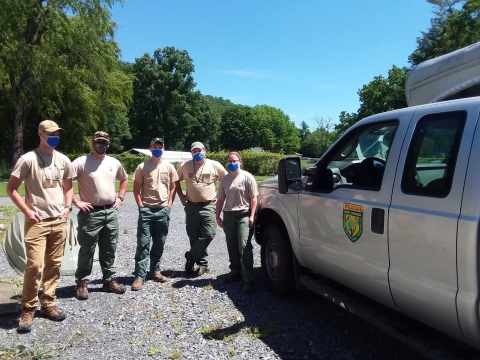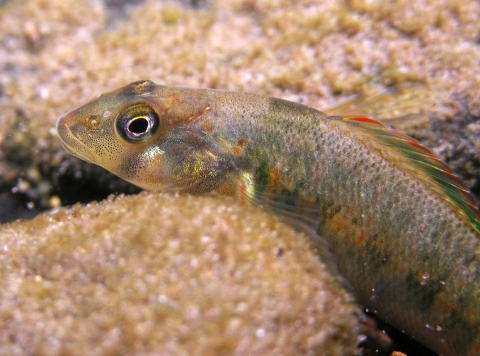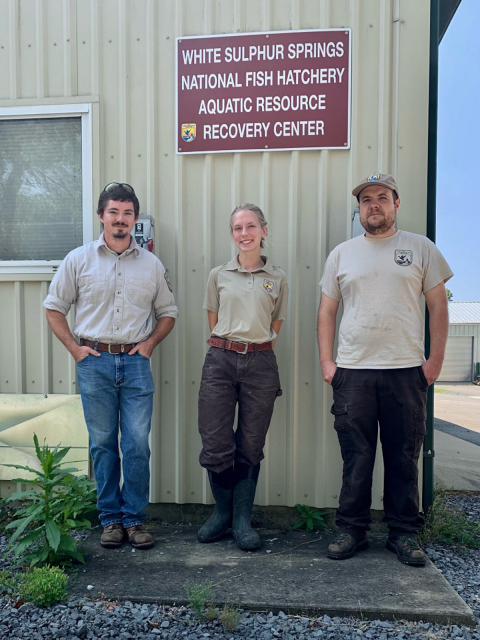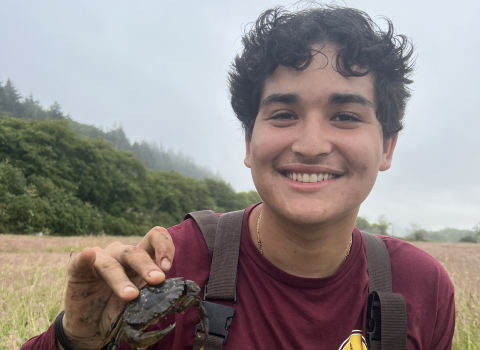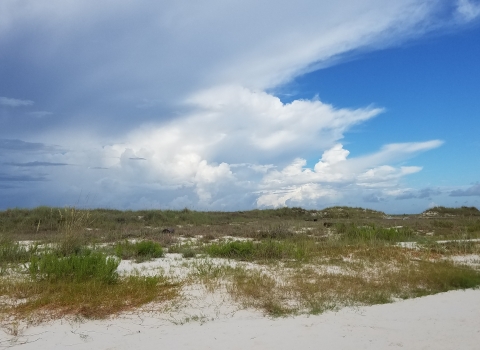Search the New River Basin and you may spot a rainbow unlike any other. The bright and sweetly named candy darter flashes vibrant teals, reds, and oranges in the shallow, rocky West Virginia and Virginia streams.
Darters are small, roughly two to three inches long, but are an integral part of freshwater stream habitats and aquatic food chains. Roughly 20 percent of freshwater fish in North America are darters.
Candy darters can live up to five years in fast-flowing streams. They breed around two, spawning in stream beds of finer pebble and gravel in mid-to-late spring.
But it’s not all sunshine and rainbows for the candy darter.
Once relatively common throughout their range, the candy darter has faced a steep decline. In November 2018, the U.S. Fish and Wildlife Service listed the candy darter as endangered under the Endangered Species Act. Nearly half of the 35 known candy darter populations have been extirpated since the species was first described in 1932.
Habitat degradation and geographic isolation has played a significant role in the candy darters’ downfall, leading many populations to dwindle or vanish completely.
An emerging threat to what’s left of the candy darters comes in the form of another darter. Variegate darters outcompete candy darters for space, food, and even mates. After multiple generations of breeding between species, candy darter genes — and their vibrant colors — can be diluted from the population. Once naturally blocked by the Kanawha Falls, variegate darters were likely introduced to upstream habitat as live baitfish.
Three years of massive efforts to propagate the fish have begun to pay off. At White Sulphur Springs National Fish Hatchery in West Virginia, West Virginia University, West Virginia Department of Natural Resources, and the Service’s West Virginia Field Office have been working to learn more about the fish, including what is needed for species’ survival.
West Virginia University’s genetic analysis and research helped biologists better understand the hybridization between the candy and variegate darter species by comparing new information with the historical candy darter populations. West Virginia Department of Natural Resources’ expertise was crucial to a successful collection of darters and thorough planning throughout the conservation efforts.
The reproductively mature adults in a population that breed (or spawn) and produce more individuals (offspring or progeny).
Learn more about broodstock home. The partnership between WVU, WVDNR, and the Service is an excellent example of folks coming together to protect an endangered fish.
Candy darters need very specific habitat features to survive and reproduce, and are easily effected by changes. Together the team was able to replicate suitable candy darter habitat in captivity and raise and care for the brood stock for more than three months. Candy darters are extremely susceptible to stress, especially during the spawning season, making this major accomplishment a challenging one. The team took special care during collection and transport, and maintained healthy adult fish throughout the season.
Another milestone came when roughly half of the candy darter pairs spawned. More than 800 eggs were laid in captivity. For the first time in a lab setting, hatchery biologists were able to record the candy darters’ spawning behavior in detail and observe 17 healthy fertilized eggs.
Male candy darters are fierce and aggressively defend the territory they’ve chosen. Spawning takes place with a complicated dance between the male and female. Ultimately the females chooses the spawning location and appears to direct the spawning activity. The result is tiny, clear round eggs roughly 2 millimeters in diameter.
Discovering more firsts is gold for the candy darter’s future.
Service fish biologist Andrew Phipps is surprised by the new candy darter discoveries and excited to learn more.
“We found that our candy darter fry, or newly hatched fish, were quite unique. Unlike the closely related variegate darter, who spend 8 to 10 days hiding in the stream gravel and feeding on the remainder of their egg yolk, candy darters seem to skip that stage and immediately start swimming. They need to eat right away which makes rearing them even more difficult.”
Of the 17 fertilized eggs, seven successfully hatched. One fry survived to 30 days. A big victory for a small fish.
In the future, Phipps hopes to study their feeding behavior and find ways to reduce stress during the spring spawning period, including holding the candy darter brood stock over the winter. Less stress could mean a healthier outcome for both the eggs and fry.
“We’re headed in the right direction and still have a ways to go. With what we’ve learned this year, we know where we can improve our methods. Next year our goal is to hatch 1,000 fry, rear them, and release them back into the New River Basin.”
This major breakthrough in candy darter conservation could give this rainbow colored fish an even brighter future. We can help too! Improve darter habitat by minimizing use of pesticides, controlling our runoff and erosion, properly disposing of live bait, and helping keep our waterways clean.


